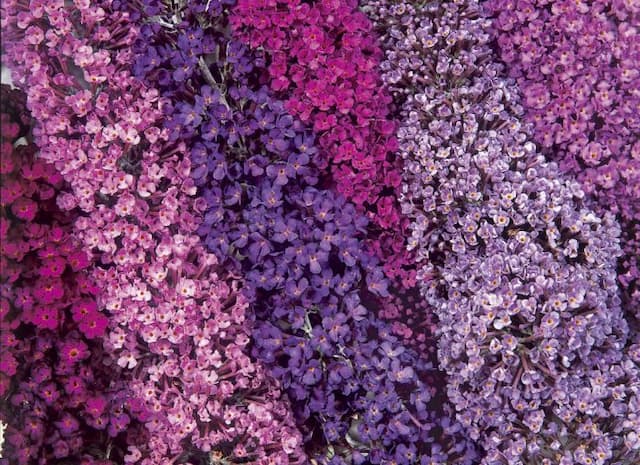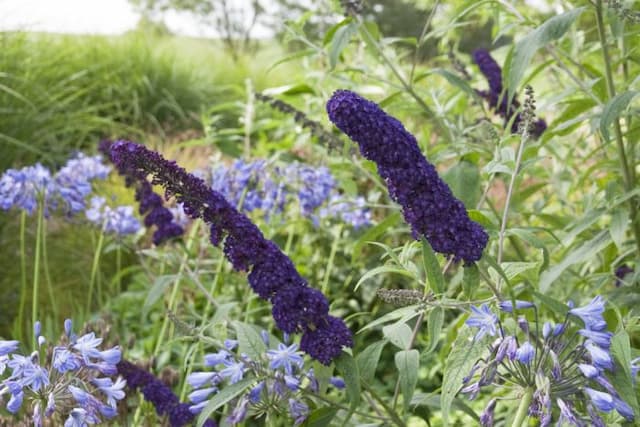Nemesia Rhubarb and Custard Nemesia Aroma Rhubarb and Custard (Aroma Series)
![aloha [Aroma Rhubarb and Custard]](/_next/image?url=https%3A%2F%2Fplants-admin.emdemapps.com%2Fimages%2Fplants%2F%2Fimages%2F604b5cb68cc9a.png&w=3840&q=75)
ABOUT
Nemesia Aroma Rhubarb and Custard is a brightly-colored, bushy annual that brings a vivid splash to any garden. This delightful plant is known for its dainty, bi-colored flowers, which have a unique color combination resembling the namesake dessert: a creamy, custard-yellow base paired with bold, raspberry-red upper petals. These flowers are typically small but abundant, creating a dense cluster of warm, cheerful hues. Each flower has a classic nemesia shape, which includes a compact, lobed lower lip and a broader upper lip, creating a charming, open-mouthed look that is reminiscent of miniature snapdragons. The leaves of the Nemesia Aroma Rhubarb and Custard are slender and lance-shaped with a bright to medium green hue, providing a perfect backdrop for the showy blooms. The foliage texture tends to be slightly toothed or serrated, adding subtle textural interest to the plant. This cultivar's leaves often form a neat and tidy mound, which serves as a dense base from which the flowers can rise and catch the eye. The plant also emits a pleasant fragrance that can be reminiscent of the dessert after which it is named, making it a delightful addition to container gardens or borders where passersby can enjoy its sweet scent. Its colorful and aromatic nature makes it a favorite among gardeners who want to create a sensory experience in their outdoor spaces. Overall, Nemesia Aroma Rhubarb and Custard is a charming, compact bedding plant with a beautiful, unique presentation and a delightful fragrance that captures the essence of a summer dessert.
About this plant
 Names
NamesFamily
Scrophulariaceae
Synonyms
Nemesia Rhubarb and Custard, Aroma Rhubarb and Custard
Common names
Nemesia Aroma Rhubarb and Custard
 Toxicity
ToxicityTo humans
Nemesia, including the Nemesia Aroma Rhubarb and Custard, is generally not considered toxic to humans. However, if ingested in large quantities, it may cause mild stomach upset. While serious poisoning is unlikely, eating any part of this ornamental plant is not advisable.
To pets
Nemesia, including the Nemesia Aroma Rhubarb and Custard, is also not known to be toxic to pets. Similar to humans, if a pet ingests a large amount of the plant, it might experience mild gastrointestinal discomfort. Monitoring your pet for any signs of distress after ingestion is wise, but significant toxicity is not expected.
 Characteristics
CharacteristicsLife cycle
Annuals
Foliage type
Deciduous
Color of leaves
Green
Flower color
Mixed
Height
1 foot 6 inches (45 cm)
Spread
1 foot (30 cm)
Plant type
Herb
Hardiness zones
9
Native area
South Africa
Benefits
 General Benefits
General Benefits- Attractive Aesthetics: Nemesia brings a burst of warm, vibrant colors to gardens with its yellow and red bi-colored flowers.
- Long Blooming Season: It flowers throughout spring and summer, providing extended visual interest in outdoor spaces.
- Fragrance: The plant emits a delightful scent, which can enhance the sensory experience of garden visitors.
- Pollinator-Friendly: It attracts bees, butterflies, and other beneficial insects, supporting local ecosystems.
- Versatility in Landscaping: Suitable for borders, flower beds, and containers, allowing for flexible garden design.
- Low Maintenance: Nemesia is relatively easy to care for and does not require extensive gardening skills or time investment.
- Drought Resistance: Once established, it can tolerate periods of dryness, reducing the need for constant watering.
- Cold Tolerance: It is capable of withstanding cooler temperatures, making it suitable for a range of climates.
 Medical Properties
Medical PropertiesThis plant is not used for medical purposes.
 Air-purifying Qualities
Air-purifying QualitiesThis plant is not specifically known for air purifying qualities.
 Other Uses
Other Uses- Nemesia can be used in aromatherapy gardens due to its delightful fragrance, thereby contributing to a calming and relaxing environment.
- The plant's vibrant colors can be a natural dye source for fabrics, providing a sustainable alternative for textile coloring.
- Pressed flower art can incorporate Nemesia flowers for their texture and color, creating unique and decorative displays.
- Nemesia can serve as a natural pest deterrent in vegetable gardens when planted as a companion due to its strong scent.
- It can be used in edible landscaping designs alongside other edible flowers and herbs for a combined aesthetic and culinary purpose.
- The flowers can be used for garnishing desserts and salads, adding a splash of color and a mild flavor to dishes.
- Nemesia can act as a living mulch to help regulate soil temperature and moisture levels.
- Due to its compact size, Nemesia is suitable for planting in hanging baskets for urban gardens with limited space.
- Its blooms can be used in potpourri mixes, adding fragrance and variety to the blend.
- Nemesia can be central to creating a sensory garden experience, particularly for educational programs that focus on engaging children with nature.
Interesting Facts
 Feng Shui
Feng ShuiThe Nemesia is not used in Feng Shui practice.
 Zodiac Sign Compitability
Zodiac Sign CompitabilityThe Nemesia is not used in astrology practice.
 Plant Symbolism
Plant Symbolism- Delight and Sensory Pleasure: The Nemesia's sweet scent and vibrant colors often symbolize the pleasures of the senses, akin to the sweet and tangy dessert it's named after.
- Charm and Amiability: Nemesias, with their bright and cheerful flowers, can represent charm, friendliness, and approachability.
- Playfulness: The striking bicolor pattern of the Rhubarb and Custard variety suggests a sense of fun and playfulness.
- Innovation: As a cultivated hybrid, the Nemesia Aroma series, including Rhubarb and Custard, may symbolize creativity and the innovation seen in gardening and hybridization.
- Comfort: Its warm and inviting colors could symbolize feelings of comfort and nostalgia, much like the warm, comforting dessert it is named after.
 Water
WaterNemesia should be watered deeply but infrequently, allowing the soil to dry out slightly between waterings. The right amount would typically be 1 to 1.5 inches of water per week, depending on weather conditions and soil drainage. It's important to avoid overhead watering to reduce the risk of foliar diseases; instead, water at the base of the plant. During the hotter parts of summer, you may need to water more frequently, especially if the Nemesia is in containers. Ensure that pots have good drainage to prevent waterlogging, which can lead to root rot.
 Light
LightNemesia prefers full sun to partial shade conditions for optimal growth. A location that receives at least 6 hours of direct sunlight is ideal, but they can tolerate some light afternoon shade, especially in hotter climates. Place your Nemesia where it can bask in the morning sun, which is less intense, and be protected during the peak heat of the day.
 Temperature
TemperatureNemesia thrives in cooler temperatures and can usually withstand light frosts. They perform best when daytime temperatures are between 60 and 75 degrees Fahrenheit, although they can survive in temperatures as low as 30 degrees Fahrenheit for short periods. The upper temperature limit for Nemesia is around 80 degrees Fahrenheit, beyond which they might start to suffer.
 Pruning
PruningPruning Nemesia involves deadheading spent flowers to encourage more blooms and maintain the plant's appearance. Remove the dead flowers and any weakened or damaged stems regularly throughout the blooming season. The best time to prune for shaping is in the early spring, just as new growth begins to appear.
 Cleaning
CleaningAs needed
 Soil
SoilNemesia prefers a well-draining soil mix rich in organic matter with a pH ranging from 5.5 to 7. A combination of peat, loam, and sand or perlite would be ideal to ensure good drainage and aeration. Amend with compost to provide nutrients.
 Repotting
RepottingNemesia should be repotted every year or when it outgrows its container. Best repotted in spring before the start of the growing season.
 Humidity & Misting
Humidity & MistingNemesia thrives best in moderate to high humidity levels. Aim for a humidity level around 50-60% for optimal growth.
 Suitable locations
Suitable locationsIndoor
Place Nemesia in bright, indirect light indoors and monitor moisture.
Outdoor
Plant Nemesia in a sunny spot with afternoon shade and well-draining soil.
Hardiness zone
9-11 USDA
 Life cycle
Life cycleThe Nemesia Aroma Rhubarb and Custard, often known simply as Nemesia, starts its life as a seed which, with adequate moisture and temperature, germinates and emerges as a seedling. The seedling grows into a vegetative plant, producing a rosette of leaves and establishing a root system. As it matures, the Nemesia enters the flowering stage, developing distinctive red and yellow blooms that attract pollinators and give the plant its common name. After pollination, the flowers produce fruits that contain seeds, completing the reproductive cycle. If conditions allow, these seeds will disperse and eventually germinate, giving rise to new plants. Over time, the plant will senesce, beginning to deteriorate until it ultimately dies, although it may complete several flowering cycles within its lifespan, which is generally a single season as it is often grown as an annual.
 Propogation
PropogationPropogation time
Spring to Summer
The Nemesia Aroma Rhubarb and Custard, a delightful plant with a scent reminiscent of its namesake dessert, is typically propagated through seeds. The most popular method involves sowing seeds in the early spring. To do this, begin by scattering the seeds on top of a moist, well-draining seed starting mix in a tray or pots. Barely cover the seeds with the mix because they need light to germinate. Place the tray in a warm spot, around 65 to 70 degrees Fahrenheit (18 to 21 degrees Celsius), and keep the soil consistently moist but not waterlogged. Seedlings usually emerge within 10 to 21 days. Once they have grown large enough to handle and after the threat of frost has passed, they can be transplanted outdoors to a sunny location with well-draining soil.


![Butterfly bush [Adonis Blue]](/_next/image?url=https%3A%2F%2Fplants-admin.emdemapps.com%2Fimages%2Fplants%2F%2Fimages%2F604b56e58f983.png&w=640&q=75)


![Butterfly bush [Buzz Ivory]](/_next/image?url=https%3A%2F%2Fplants-admin.emdemapps.com%2Fimages%2Fplants%2F%2Fimages%2F604b57987dfa8.png&w=640&q=75)
![Butterfly bush [Camberwell Beauty]](/_next/image?url=https%3A%2F%2Fplants-admin.emdemapps.com%2Fimages%2Fplants%2F%2Fimages%2F604b5ead04c12.png&w=640&q=75)


